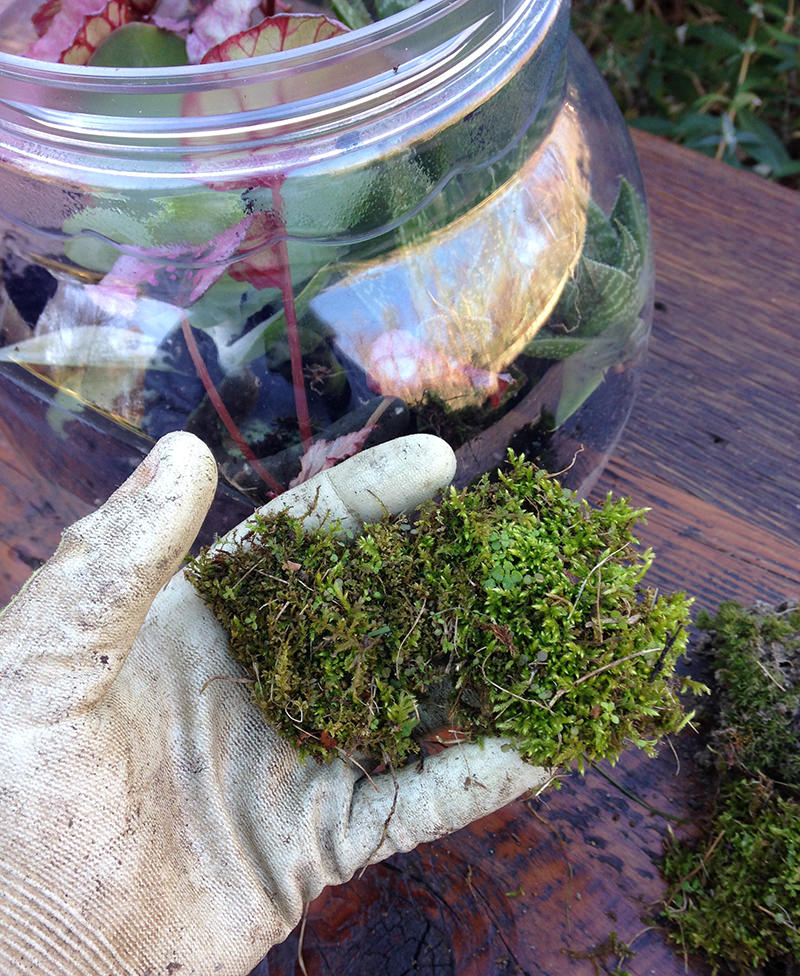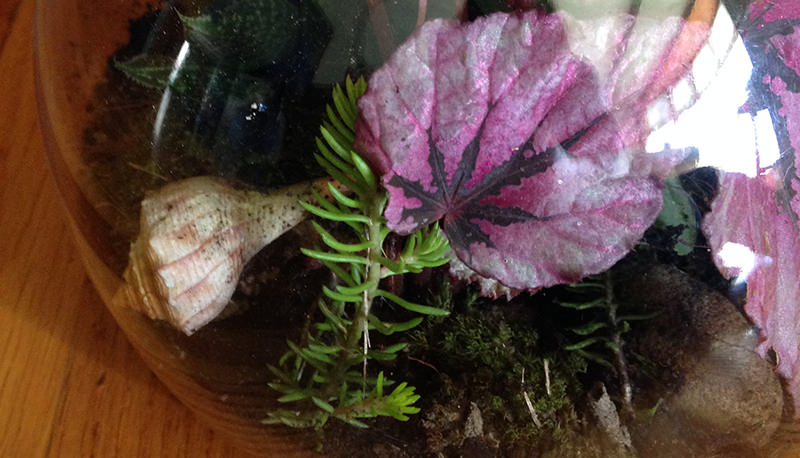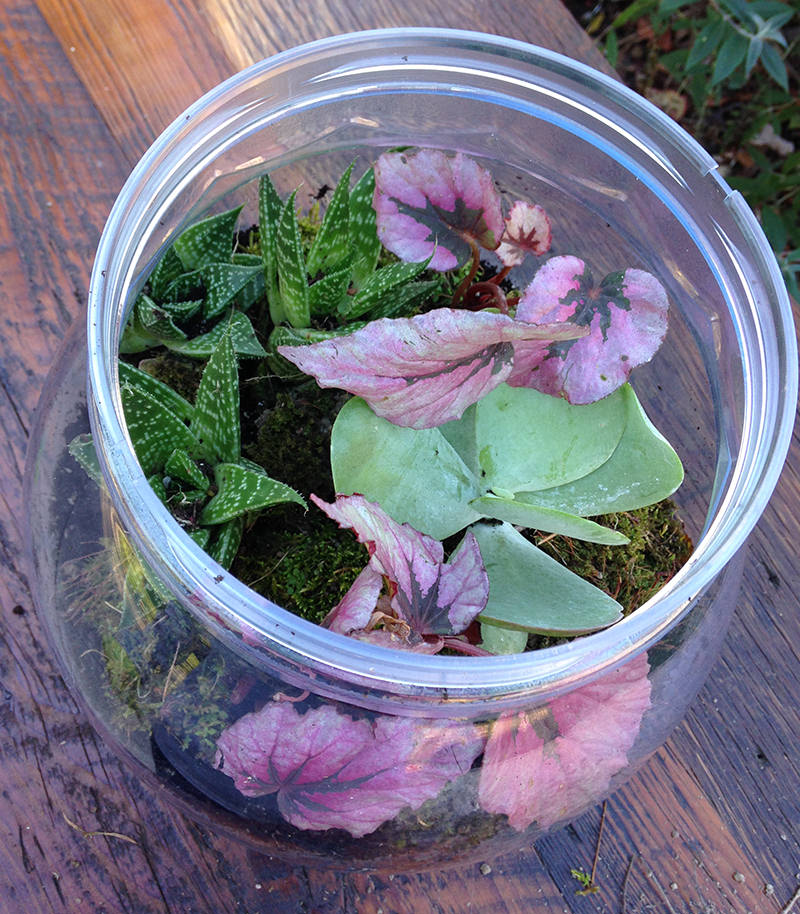
My 11-year-old son is a pretzel-holic, and every few weeks we end up with a big, empty plastic pretzel bin. I’ve used them to store crafting supplies, seed packets, dried fruit, nuts and Halloween candy over the years, but I was looking for a way to breathe new life into them. Our two young cats love to explore everything, including the houseplants, so I decided to turn all those empty pretzel bins into terrariums. That way, the bins don’t head to the landfill (our community doesn’t recycle the type of plastic they’re made of), and our cats can’t access the plants to dig them up or taste test the foliage. I now have four of these terrariums in the house, and they certainly add a bit of green to long winter days.
Step 1

Wash out the inside of the snack bin with mild dishwashing liquid and water. Bins with wider openings make it easier to reach inside to arrange the plants.
Step 2

Remove the label. The glue on some brands is extremely tacky. I use WD-40 or GooGone to remove the label. Then I wash the exterior of the bin with a grease-cutting dishwashing liquid to remove all the residue.
Step 3

Fill the bin 1/4 to 1/3 full with high-quality, sterile, soilless potting soil. I use a brand formulated especially for houseplants. Do not use a mix that contains fertilizer. Instead, use a potting mix with no fertilizer at all. Because your terrarium is a closed system, fertilizer salts won’t be flushed out of the soil via a drainage hole, and they can quickly build up in it and cause foliage burn.
Step 4

Plant five to six small-statured plants into the potting soil. With the current popularity of fairy gardening, many garden centers carry miniature plants that are perfect for a terrarium. You can use just about any small plant in your terrarium. I used a miniature begonia, some sedum, a small aloe called lace aloe that stays under 6 inches, and a succulent called a flapjack. The flapjack will eventually outgrow the terrarium, but that’s OK because it will move outside, into a garden pot, next spring.
Step 5

Once your plants are settled in, cover the soil with a few small pieces of moss. I gather mine from the woods behind our house, but you can also purchase sheet moss from your local florist or craft-supply store.
Step 6

If you’d like, you can also add accents such as small stones, seashells or even fairy garden furniture.
Step 7

Water your terrarium with distilled or tap water that’s been sitting on the counter for a day or two to allow the chlorine to dissipate. Don’t water too much because there are no drainage hole. Add just enough to settle the soil around the plants’ roots. Put the lid on. This type of terrarium is a closed system and will be self-watering. As the water evaporates out of the soil and transpires from the plants, it will condense and collect on the inside of the snack bin and dribble back down into the soil.
Place your snack bin terrarium where it receives bright, but not direct, sunlight. Keep it away from cold drafts.




